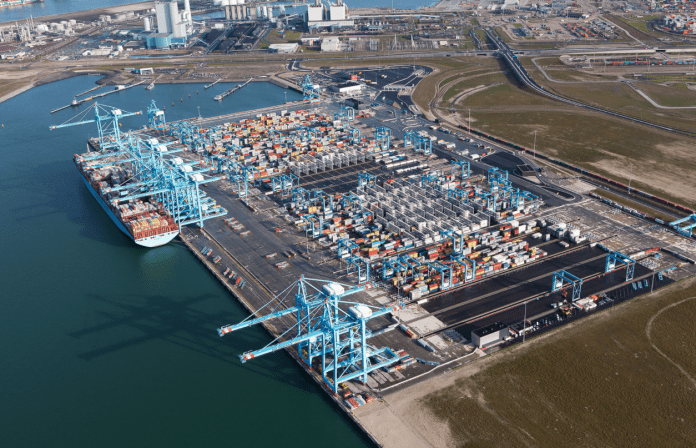The Port of Rotterdam Authority and the municipality of Rotterdam have commenced a study at the terminals of Hutchison Ports ECT Rotterdam (ECT), APM Terminals Maasvlakte II (APMT2), Vopak, and Cruiseport Rotterdam, aiming to establish shore-based power in the container, cruise, and liquid bulk sectors.
The findings of the study, which is partly subsidised by the EU, should reveal how shore-based power can be rolled out in the port of Rotterdam to reduce greenhouse gas (CO2) emissions and air pollution.
“Shipping companies want to have certainty that their vessels can make use of shore-based power, also in other ports, before they invest in the adaptations this requires. Within this framework, the Port Authority together with other ports, including those of Antwerp, Bremen, Hamburg, and Le Havre, is developing and planning shore-based power facilities,” stated Port of Rotterdam Authority CEO, Allard Castelein.
“In the next few years, we want to give shore-based power a boost,” added Arno Bonte, alderman for Sustainability, Air Quality, and Energy Transition. “Once sea-going vessels and cruise ships are ‘plugged in’ when berthed at the quay, polluting diesel generators can be switched off. This leads to less air pollution and also contributes to achieving our climate targets,” he pointed out.
With shore-based power, sea-going vessels can obtain sustainable power from the quay. The Dutch’s Port Authority has calculated that the total energy demand, and therefore the consumption, of sea-going vessels in the port, amounts to approximately 750-850GWh, which is equivalent to the energy consumption of 250,000 households, according to a statement.
“This means that if vessels are ‘plugged in’ when berthed at the quay, diesel generators can be switched off, which is good news for the air quality and the reduction of CO2 emissions,” explained the Port Authority.
Before shore-based power can be installed at the port’s terminals, studies on how the installations can be integrated with regular operations, as well as detailed technical, environmental, and social costs and benefits analyses, tendering procedures, and permit procedures have to be conducted.
If the studies remain on schedule, they are estimated to be completed in 2023. As soon as shore-based power is in place, it will be used at several vessel visits and this number is expected to be increased to hundreds of visits per year.
As for inland shipping, it has been using shore-based power in the port of Rotterdam on a large scale for over a decade. The Stena Line terminal in Hoek van Holland has shore-based power, while Heerema will commission a shore-based power installation at Landtong Rozenburg early next year for its offshore vessels, according to a statement.







